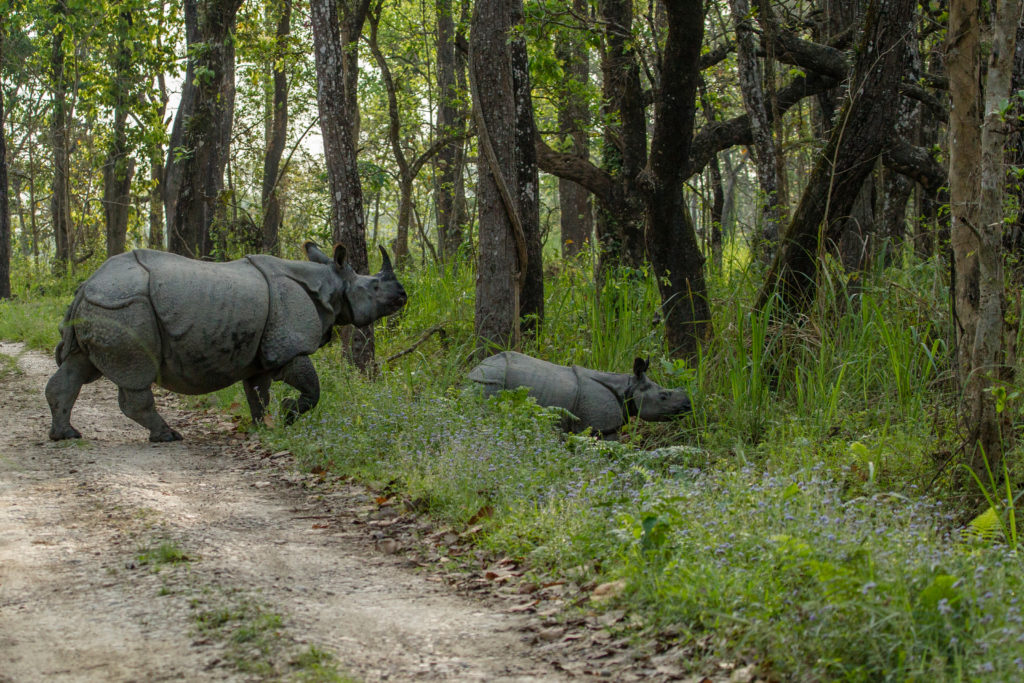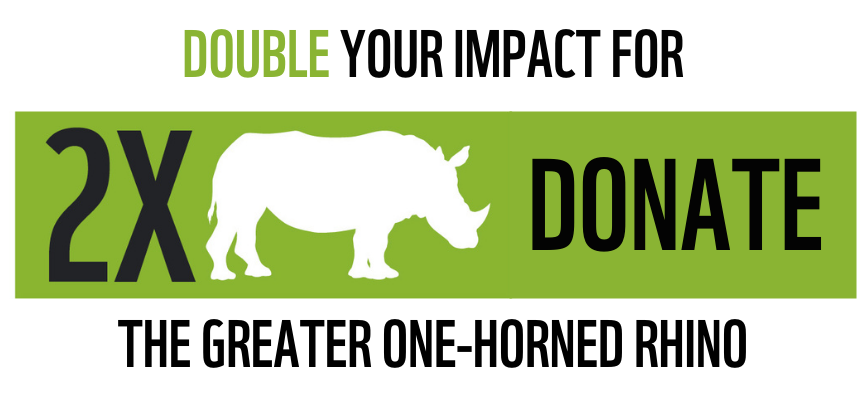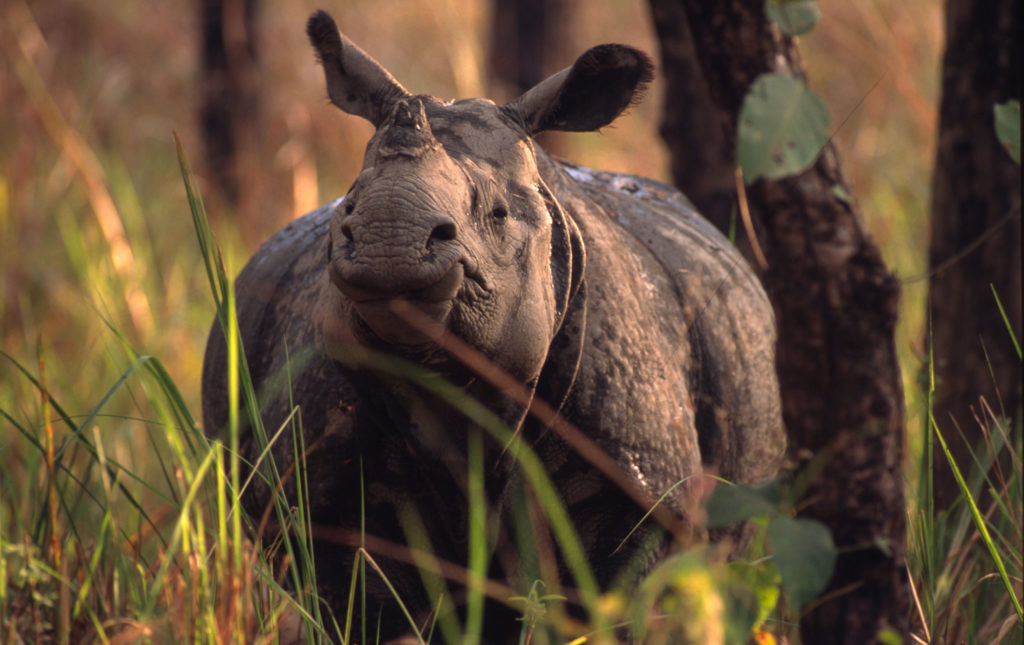Armoured yet vulnerable: Help protect the greater one-horned rhino
The greater one-horned rhino may look tough, but it needs our protection. Your gift will be matched until May 20, 2022.
Remember being told as a child that you can’t judge a book by its cover? I thought about that expression often while working with the greater one-horned rhino (Rhinoceros unicornis) in Nepal.
Weighing 1,800 to 2,700 kilograms with a distinctive single black horn, these hulking armoured giants seem impenetrable and unstoppable. In reality, they’re one of the most vulnerable large animals in the world.
These amazing creatures were pushed to the brink of extinction at the start of the 20th century, mainly because of hunting. Once widespread throughout Asia, greater one-horned rhinos are now only found in Nepal and India. But thanks to decades of conservation efforts, their population is slowly recovering, and current counts are close to 4,000 individuals.
Their comeback shows that wildlife populations can be recovered — even in perilous situations — if concerted efforts are made.
Our job isn’t done yet
Although you may know me more for my work on Asian big cats, my very first assignment as a WWF biologist was to supervise a rhino count in Nepal’s Chitwan National Park. Every five years, Nepal takes up the immense task to monitor their status in the wild. Nearly doubling from a mere 409 rhinos in 2005 to 752 today, rhino conservation has come a long way.
The greater one-horned rhino is one of Asia’s most impressive conservation success stories. But we cannot let this success lull us into believing that our job is done. While rhino numbers have increased, the rate of growth has slowed in recent years from 4 per cent in 2015 to 2.5 per cent in 2021.
More rhinos can trigger competition over food and space — as well as increased conflict with humans — so as the rhino populations grow, so too must our conservation efforts.
With a diet consisting largely of grasses, leaves, fruit and aquatic plants, these voracious vegetarians need a significant amount of food to thrive. But as habitat gives way to highways, railway lines and human development, and native vegetation is crowded out by invasive plants, food availability has drastically declined for greater one-horned rhinos.
Their massive appetites can drive them to feed on local crops, leading to conflict with communities that can result in injury and even death for both rhinos and people. Having enough space also plays a critical role in rhino conservation as they are a wide-ranging species.
COVID-19 has further heightened the risks to rhinos. Poaching and the illegal trade of rhino horn, fuelled by demands in the international market, is still one of the gravest threats to the species. Since the pandemic began, a surge of rhino poaching events has occurred in Nepal, possibly linked to heavy economic losses in neighbouring communities. This comes after a prolonged period of zero poaching events in Nepal.

Keeping the momentum going
Over the years, I’ve helped develop population and habitat monitoring protocols as well as conservation action plans for rhinos and other large wild animals in Nepal, so I know first-hand what a tremendous impact your support can make.
In fact, I’m currently in Nepal working closely with my colleagues to implement proven conservation tactics to protect the habitat and lives of the greater one-horned rhino, including:
- Restoring critical habitats to ensure there is room for growing rhino populations;
- Supporting the development of wildlife-friendly policies that safeguard rhino habitats and protect wildlife movement corridors from human encroachment;
- Monitoring and researching rhino populations to inform conservation strategies; and
- Partnering with local communities to invest in eco-tourism and job creation, demonstrating that rhinos are worth more alive than dead.
Together, we brought the greater one-horned rhino back from the brink. Now, we need your help to keep that momentum going. Can we count on your support?
The greater one-horned rhino is a conservation success story, but our progress is at risk. Please give by May 20 so that your support for this vulnerable giant will be doubled.



